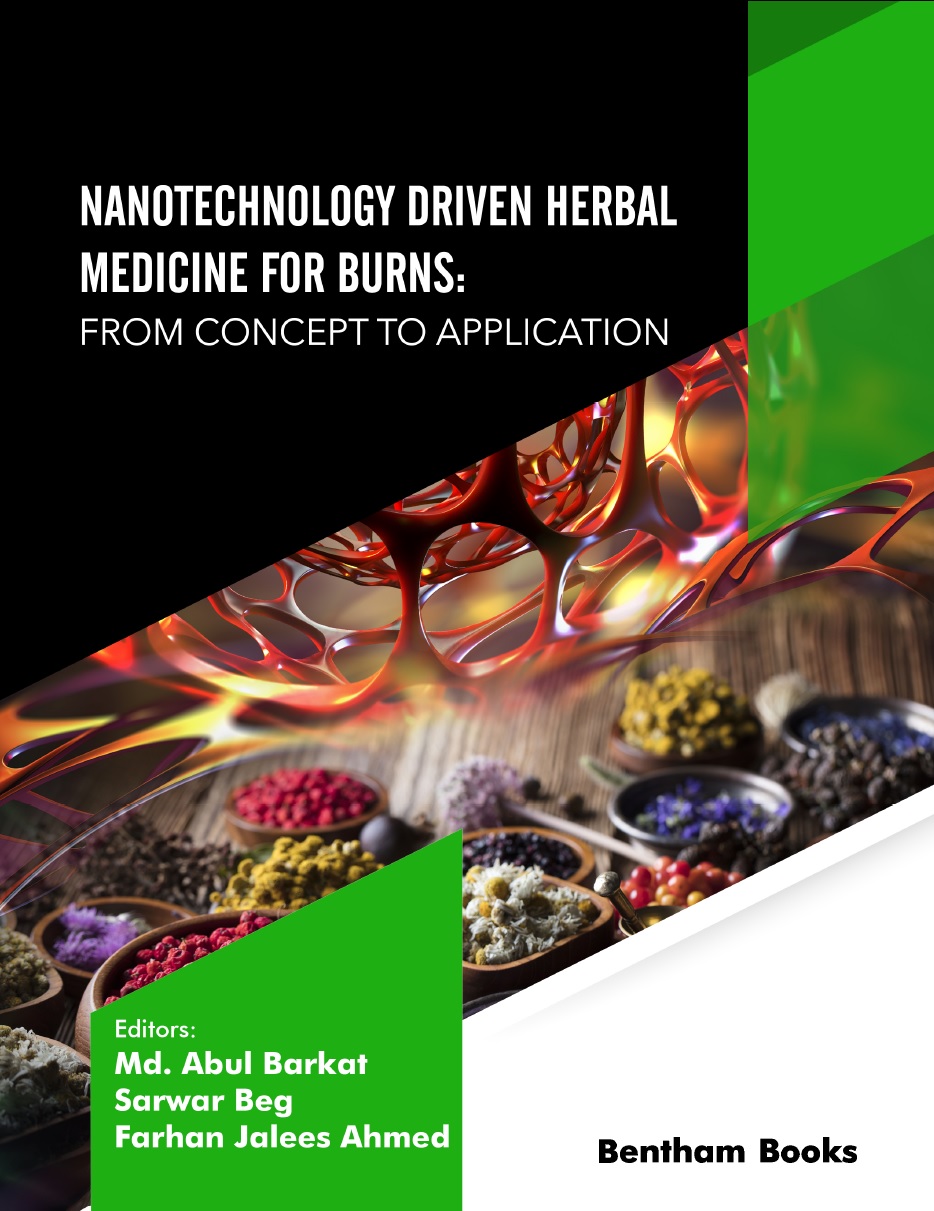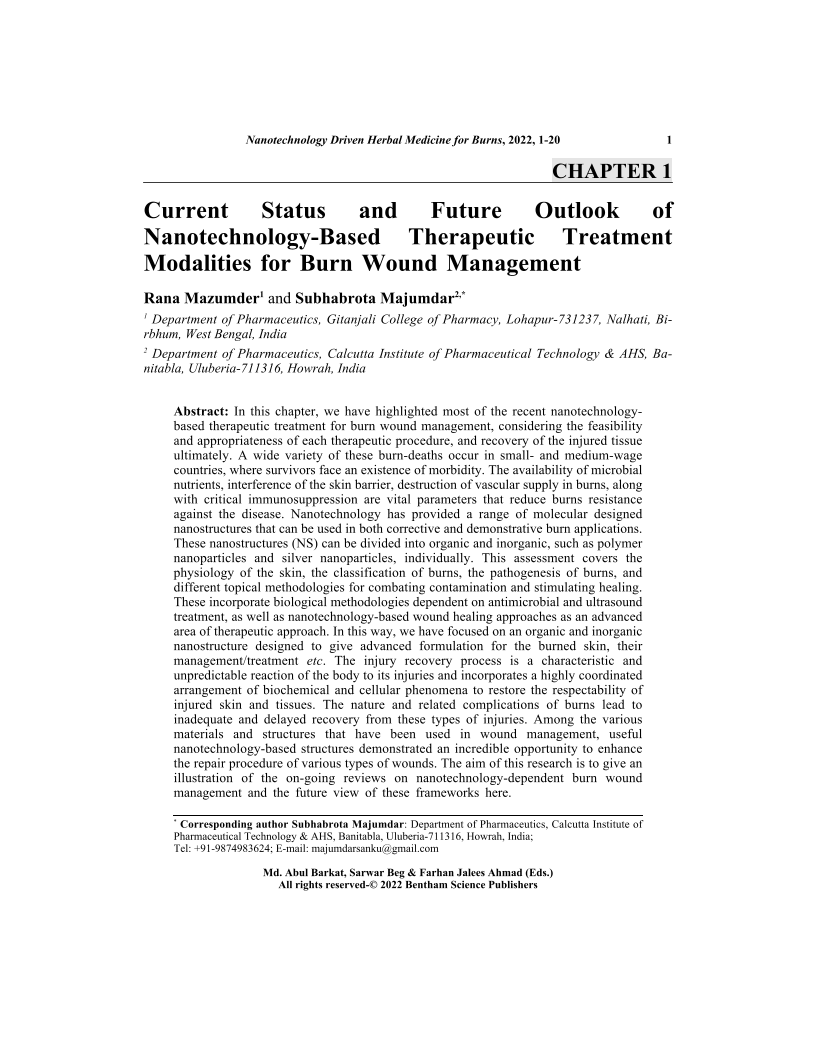Current Status and Future Outlook of Nanotechnology-Based Therapeutic Treatment Modalities for Burn Wound Management

- Authors: Rana Mazumder1, Subhabrota Majumdar2
-
View Affiliations Hide AffiliationsAffiliations: 1 Department of Pharmaceutics, Gitanjali College of Pharmacy, Lohapur 731237, Nalhati, Birbhum, West Bengal, India 2 Department of Pharmaceutics, Calcutta Institute of Pharmaceutical Technology & AHS, Banitabla, Uluberia-711316, Howrah, India
- Source: Nanotechnology Driven Herbal Medicine for Burns: From Concept to Application , pp 1-20
- Publication Date: December 2021
- Language: English
Current Status and Future Outlook of Nanotechnology-Based Therapeutic Treatment Modalities for Burn Wound Management, Page 1 of 1
< Previous page | Next page > /docserver/preview/fulltext/9789815039597/chapter-1-1.gif
<div>In this chapter, we have highlighted most of the recent nanotechnologybased</div><div>therapeutic treatment for burn wound management, considering the feasibility</div><div>and appropriateness of each therapeutic procedure, and recovery of the injured tissue</div><div>ultimately. A wide variety of these burn-deaths occur in small- and medium-wage</div><div>countries, where survivors face an existence of morbidity. The availability of microbial</div><div>nutrients, interference of the skin barrier, destruction of vascular supply in burns, along</div><div>with critical immunosuppression are vital parameters that reduce burns resistance</div><div>against the disease. Nanotechnology has provided a range of molecular designed</div><div>nanostructures that can be used in both corrective and demonstrative burn applications.</div><div>These nanostructures (NS) can be divided into organic and inorganic, such as polymer</div><div>nanoparticles and silver nanoparticles, individually. This assessment covers the</div><div>physiology of the skin, the classification of burns, the pathogenesis of burns, and</div><div>different topical methodologies for combating contamination and stimulating healing.</div><div>These incorporate biological methodologies dependent on antimicrobial and ultrasound</div><div>treatment, as well as nanotechnology-based wound healing approaches as an advanced</div><div>area of therapeutic approach. In this way, we have focused on an organic and inorganic</div><div>nanostructure designed to give advanced formulation for the burned skin, their</div><div>management/treatment etc. The injury recovery process is a characteristic and</div><div>unpredictable reaction of the body to its injuries and incorporates a highly coordinated</div><div>arrangement of biochemical and cellular phenomena to restore the respectability of</div><div>injured skin and tissues. The nature and related complications of burns lead to</div><div>inadequate and delayed recovery from these types of injuries. Among the various</div><div>materials and structures that have been used in wound management, useful</div><div>nanotechnology-based structures demonstrated an incredible opportunity to enhance</div><div>the repair procedure of various types of wounds. The aim of this research is to give an</div><div>illustration of the on-going reviews on nanotechnology-dependent burn wound</div><div>management and the future view of these frameworks here. </div>
-
From This Site
/content/books/9789815039597.chapter-1dcterms_subject,pub_keyword-contentType:Journal105

